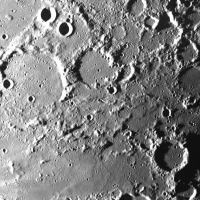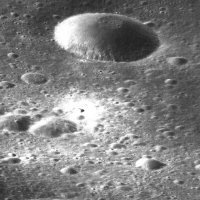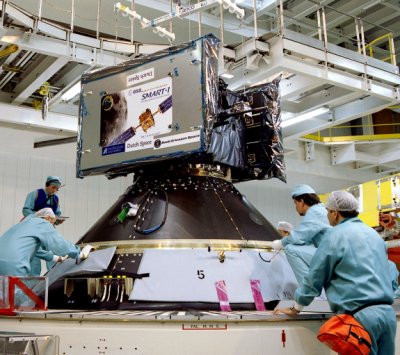SMART-1 images the moon


Moon image using AMIE's clear filter View of lunar crater, or is it a dome?
SMART-1 is the first mission to the Moon by the European Space Agency (ESA). The little probe will gather high and medium resolution images of the surface of the Moon from various angles using various light filters that will serve to answer the question "Where did the Moon come from?".
Despite voluminous data gathered as a result of US and Soviet space programs during the '60s, '70s, and '90s, much mystery remains as to the origins of our Earth's largest natural satellite.
SMART-1 is the latest in a series of scientific successes by the European Space Agency (ESA) including the notable landing of the Huygens probe on the Saturnian moon Titan on January 14th.
Despite the objective of gathering scientifically important lunar images, a secondary goal is to test key technologies such as solar-electric propulsion which basically involves using electricity generated by the solar panels to produce a beam of charges particles that are expelled from an engine, producing thrust. This engine is known as an ion engine, which is more fuel efficient than previous designs. More about ion engines here: Ion drives: Science fiction or science fact?.

Read more about SMART-1 and other ESA projects at the ESA website.
Good Night!








0 Comments:
Post a Comment
<< Home